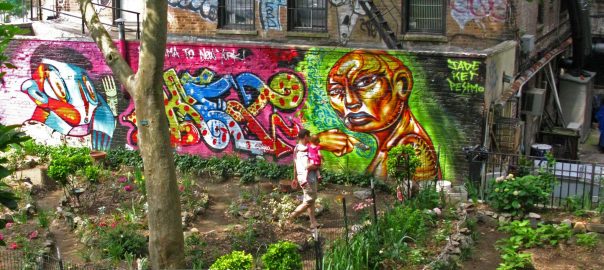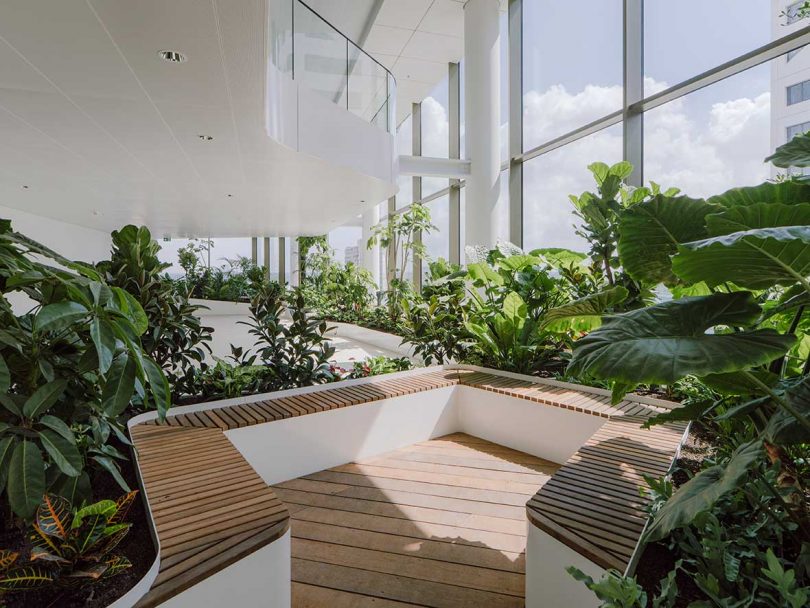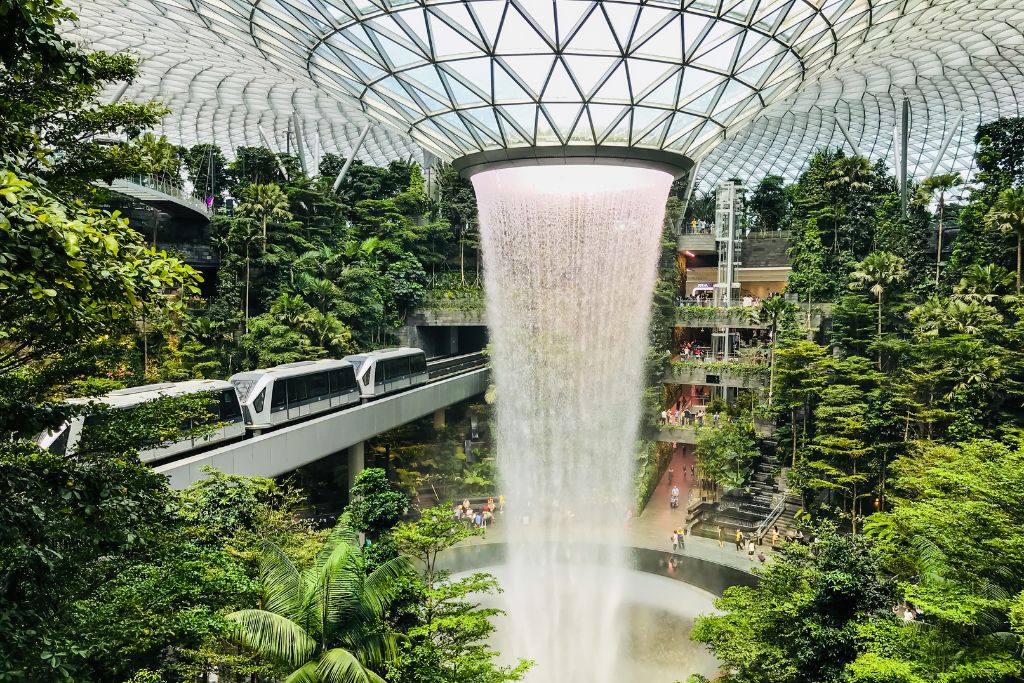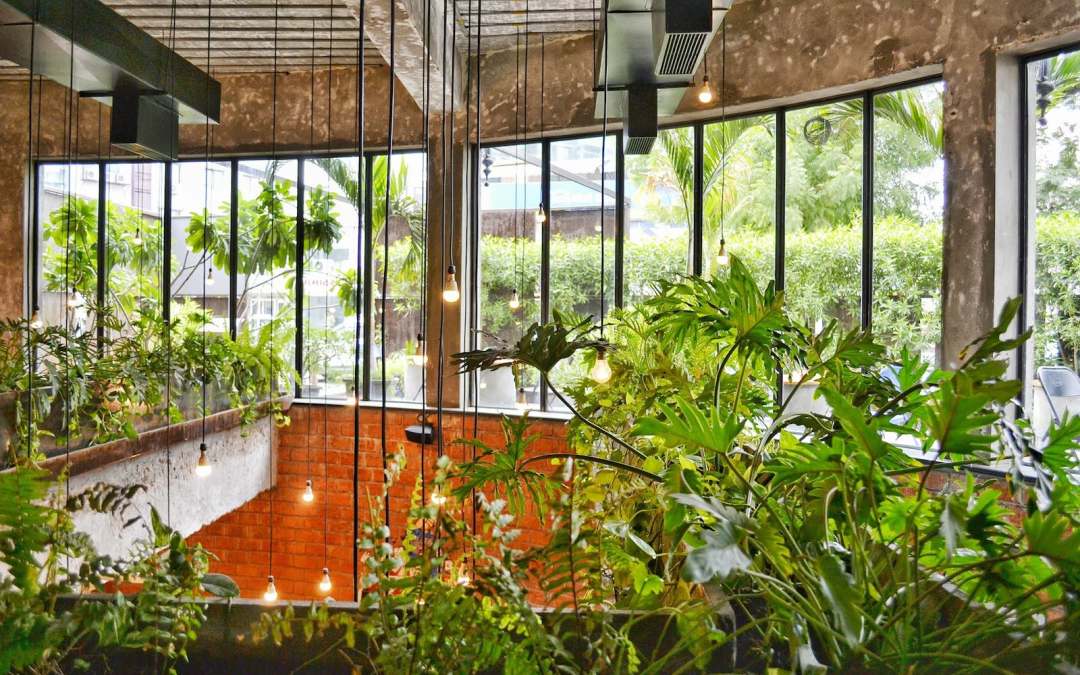Exploring Urban Acupuncture and the Benefits of Biophilic Nodes
Urban environments frequently exhibit a sense of disconnection; however, innovative concepts such as **Urban Acupuncture** and **Biophilic Nodes** are significantly transforming cityscapes into vibrant and interactive spaces.
These methodologies concentrate on **small-scale interventions** that promote community engagement and enhance overall well-being, underscoring the critical role of nature in urban design.
By examining the principles underpinning **Urban Acupuncture**, its various techniques, and the integration of **Biophilic Nodes**, this discussion elucidates how cities can revitalize their infrastructure while simultaneously improving **mental and physical health** for their residents.
Through compelling case studies and **practical implementation strategies**, this exploration aims to demonstrate how these concepts are reshaping urban experiences.
What Is Urban Acupuncture?
Urban Acupuncture represents a transformative approach to urban design, focused on revitalizing cities through small-scale, targeted interventions that enhance community engagement and ecological health.
This methodology draws upon principles from ecological architecture, emphasizing the integration of sustainable practices within urban spaces to promote the development of sustainable cities.
By strategically positioning biophilic nodes and green infrastructure, Urban Acupuncture fosters a deeper human-nature connection and enhances walkability in urban environments.
Ultimately, this approach contributes to improved public health and social cohesion within communities.
What Are The Principles Of Urban Acupuncture?
The principles of Urban Acupuncture focus on enhancing community engagement, promoting ecological architecture, and fostering design equity within urban environments. These principles advocate for placemaking strategies that prioritize the well-being of residents through the integration of nature-based solutions and green infrastructure into urban design, ultimately leading to an improved quality of life in urban areas.
By incorporating elements such as urban gardens, green roofs, and permeable surfaces, Urban Acupuncture not only beautifies neighborhoods but also enhances biodiversity and mitigates urban heat. This approach emphasizes community resilience by enableing residents to engage actively in revitalization efforts, ensuring that local needs and aspirations are effectively addressed.
The integration of ecological architecture is crucial, as it employs sustainable materials and energy-efficient designs that align with natural ecosystems. This comprehensive perspective on urban planning fosters environments in which individuals can thrive, reinforcing the essential connection between communities and their environments.
How Does Urban Acupuncture Work?
Urban Acupuncture is a method that focuses on identifying underutilized areas within urban environments and transforming them into dynamic public spaces that encourage community engagement and promote biodiversity.
This approach employs strategic interventions, including the creation of urban greenways and the implementation of green roofs, utilizing nature-based solutions to address various urban challenges.
By enhancing the psychological well-being of residents and improving the overall habitability of urban areas, Urban Acupuncture contributes to the development of healthier and more resilient communities.
What Are The Different Techniques Used In Urban Acupuncture?
The techniques employed in Urban Acupuncture are diverse and frequently customized to meet the specific needs of each urban area. These techniques incorporate elements such as passive design, urban greenways, and community gardens, all aimed at enhancing city biodiversity and social practices. Each method is designed to create restorative environments that promote engagement and connection among residents.
For example, the adaptive reuse of existing structures revitalizes neglected buildings, transforming them into vibrant spaces for community gatherings and local businesses. Concurrently, urban agriculture initiatives foster participation in local food systems, promoting sustainability while cultivating a sense of ownership and responsibility among individuals.
Additionally, sensory urbanism enhances public spaces by engaging all the senses, thereby creating environments that resonate emotionally with residents and invite deeper interactions.
Collectively, these approaches contribute to urban revitalization, improve community health by encouraging physical activity, and support ecological restoration. This illustrates how thoughtful urban interventions can transform cities into thriving ecosystems.
What Are Biophilic Nodes?
Biophilic Nodes are strategically designed elements within urban planning that integrate natural elements into constructed environments, thereby enhancing sensory experiences and fostering a stronger connection between humans and nature.
These nodes act as focal points for biodiversity, offering habitats for urban wildlife while promoting environmental sustainability and improving the ecological footprint of urban areas.
What Is The Concept Of Biophilia?
The concept of biophilia pertains to the inherent human affinity for nature and living systems, underscoring the significance of cultivating this connection to enhance psychological well-being and overall quality of life. By fostering awareness of nature, biophilia advocates for designs that facilitate interaction with the natural environment, resulting in healthier and more restorative urban settings.
This intrinsic bond promotes a sense of belonging and security, which are essential for mental health. Research in environmental psychology indicates that access to green spaces can alleviate stress, elevate mood, and enhance cognitive function.
The implications for urban design are profound; the integration of parks, green rooftops, and natural elements into city planning not only enhances aesthetic appeal but also fosters community engagement. Such designs can cultivate a shared sense of purpose among residents, promoting healthier lifestyles and strengthening social connections.
Ultimately, by prioritizing biophilic elements, urban planners possess the potential to transform cities into thriving ecosystems that support both human and environmental health.
How Are Biophilic Nodes Incorporated In Urban Design?
Biophilic Nodes are incorporated into urban design through the strategic integration of green infrastructure and nature-based solutions, which prioritize the establishment of accessible outdoor environments and promote urban agriculture. These nodes not only enhance the visual aesthetics of urban spaces but also contribute to urban biodiversity and foster community engagement.
The implementation of features such as green roofs enables cities to transform otherwise stark building surfaces into vibrant ecosystems that support plant life while providing insulation for structures and managing stormwater runoff.
Living architecture directly integrates vegetation into buildings, allowing walls and facades to serve as habitats for various species.
Community gardens play a critical role as ecological spaces where residents can cultivate produce while strengthening social connections, thereby enhancing urban resilience. These approaches emphasize the importance of integrating nature within urban frameworks, creating healthier environments in which both people and wildlife can flourish.
What Are The Benefits Of Urban Acupuncture And Biophilic Nodes?
The benefits of Urban Acupuncture and Biophilic Nodes are multifaceted, encompassing enhancements in community interactions, improvements in mental and physical health, and increased biodiversity within urban environments.
These approaches promote social cohesion and contribute significantly to the overall resilience and sustainability of urban areas.
1. Enhances Community Interaction
One of the primary benefits of Urban Acupuncture is its ability to enhance community interaction by transforming public spaces into vibrant and inclusive areas that promote social cohesion. By facilitating community engagement, these interventions foster a sense of belonging and resilience among residents.
Through the integration of strategic events, workshops, and artist installations, these initiatives revitalize neglected spaces while providing opportunities for neighbors to connect and collaborate. When communities unite to reimagine their environment, they construct a shared narrative that strengthens local identity.
The improved public spaces encourage diverse social practices, allowing residents to engage in activities such as outdoor movie nights, farmers’ markets, and cultural festivals.
Such initiatives are essential for reinforcing community ties, enableing individuals, and ultimately contributing to a more resilient urban fabric.
2. Improves Mental And Physical Health
Urban Acupuncture has a significant positive impact on mental and physical health by promoting nature therapy and improving access to green spaces within urban ecosystems. These interventions are associated with reduced stress levels, increased physical activity, and overall better health outcomes for community members.
Research indicates that the integration of greenspaces into urban design enhances well-being by providing residents with tranquil environments conducive to relaxation and recreation. Studies have shown that urban greenery can alleviate symptoms of anxiety and depression while encouraging physical activities such as walking, jogging, and fostering social interactions.
Furthermore, the presence of parks and community gardens plays a crucial role in enhancing the quality of life by facilitating social cohesion and community engagement. The strategic incorporation of nature into urban planning not only enhances aesthetic appeal but also serves as an essential component in promoting holistic health and wellness for individuals residing in increasingly dense metropolitan areas.
3. Increases Biodiversity
The implementation of Urban Acupuncture strategies enables cities to significantly enhance biodiversity through the establishment of urban habitats and the restoration of ecological systems. This enhancement of biodiversity supports urban wildlife, contributes to ecological balance, and fosters a greater understanding of nature integration among residents.
For example, transforming vacant lots or underutilized spaces into green corridors can attract a variety of bird species and pollinators, thereby enriching the urban ecosystem. Additionally, the creation of miniature parks or community gardens not only provides essential green space but also promotes the growth of native plants, improving habitat connectivity for urban wildlife.
Furthermore, incorporating bioswales and rain gardens into urban planning facilitates effective stormwater management while simultaneously nurturing a diverse range of flora and fauna. These elements are integral to sustainable city planning, as they enhance resilience against environmental changes and improve the overall quality of life for urban residents.
What Are The Examples Of Successful Urban Acupuncture And Biophilic Nodes Projects?
Numerous successful examples of Urban Acupuncture and Biophilic Nodes projects demonstrate their transformative potential in urban revitalization and community engagement.
These initiatives showcase innovative strategies for integrating green infrastructure and enhancing local ecosystems while simultaneously fostering stronger connections within the community.
1. The High Line, New York City
The High Line in New York City serves as a quintessential example of Urban Acupuncture, effectively transforming a previously disused elevated railway into a vibrant public space that fosters community engagement and urban revitalization.
This project integrates green infrastructure and biophilic design elements, thereby enhancing the overall quality of urban life.
By incorporating lush gardens, art installations, and communal gathering areas into the urban landscape, the High Line cultivates a sense of belonging among diverse populations. This innovative approach not only promotes biodiversity by providing habitats for local wildlife, but it also functions as a model for similar initiatives globally.
The High Line exemplifies how intentional design can revitalize neglected spaces and encourage social interaction, demonstrating that thoughtful urban planning can lead to sustainable and thriving communities.
Its success underscores the transformative potential of integrating natural elements within urban environments, ultimately serving as an inspiration for future projects aimed at enhancing city life.
2. The Cheonggyecheon Stream, Seoul
The Cheonggyecheon Stream in Seoul serves as a prime example of Urban Acupuncture principles by transforming a degraded waterway into a flourishing ecological corridor that enhances biodiversity and promotes the integration of nature within the urban environment. This initiative has not only improved environmental quality but has also revitalized the surrounding areas, creating dynamic community spaces.
The dedicated efforts to restore this previously polluted stream have yielded significant ecological benefits, fostering habitats for various urban wildlife, including fish, birds, and insects. The return of these species is indicative of a healthier ecosystem and contributes to a more balanced urban biodiversity, which is crucial for maintaining ecological resilience.
Furthermore, the revitalization has resulted in increased community engagement, as residents actively participate in conservation initiatives and benefit from improved access to recreational areas. The positive impact on community health is apparent, with enhanced green spaces promoting physical activity and social interaction, thereby enriching the overall quality of life for individuals in the area.
3. The High Trestle Trail Bridge, Iowa
The High Trestle Trail Bridge in Iowa represents a successful Urban Acupuncture initiative, effectively connecting communities and enhancing outdoor learning opportunities while promoting physical activity along its scenic route. This project serves as a prime example of how infrastructure can fulfill multiple purposes, fostering community interaction and environmental awareness.
By providing a visually appealing pathway for cyclists, hikers, and families, the bridge not only facilitates stronger connections among residents but also cultivates a collective appreciation for the local ecosystem. As visitors traverse the bridge, they engage with the surrounding native flora and fauna, thereby enriching their understanding of urban ecology.
This remarkable structure has evolved into a venue for various community events and educational programs, fostering a vibrant atmosphere where health benefits and social cohesion can flourish. Ultimately, the High Trestle Trail Bridge stands as a testament to how thoughtful design can promote active lifestyles while nurturing a sense of place and environmental stewardship.
How Can Cities Implement Urban Acupuncture And Biophilic Nodes?
Cities can implement Urban Acupuncture and Biophilic Nodes through a collaborative approach that emphasizes community engagement, effective land use planning, and the prioritization of green infrastructure within urban design.
By leveraging nature-based solutions, urban areas can effectively address pressing challenges and enhance the quality of life for their residents.
1. Collaboration Between Community And Designers
Collaboration between community members and designers is essential for the successful implementation of Urban Acupuncture and Biophilic Nodes, ensuring that urban design accurately reflects the needs and aspirations of local residents. This partnership promotes design equity and enables communities to engage in social practices that enhance their environments.
When urban design initiatives incorporate local perspectives, the outcomes tend to be more meaningful and sustainable. For example, the revitalization of public spaces in cities such as Detroit and Seattle demonstrates how collaborative efforts can transform neglected areas into vibrant community hubs.
In these projects, stakeholders—including architects and local artists—work in conjunction with residents to identify specific needs, ensuring that the final designs are not only functional but also celebrate the community’s culture.
These examples highlight the importance of community engagement, which not only enriches the design process but also fosters a sense of ownership and belonging among residents, ultimately leading to more successful and enduring urban interventions.
2. Utilizing Underutilized Spaces
Utilizing underutilized spaces is crucial for the success of Urban Acupuncture, as it enables cities to transform neglected areas into vibrant community assets that advance green infrastructure and biodiversity. Through initiatives such as community gardens and adaptive reuse, municipalities can revitalize these spaces to enhance urban quality of life.
By establishing pockets of greenery and promoting community-driven projects, these transformations not only contribute to ecological balance but also foster social interaction among residents, thereby rekindling a collective sense of ownership. Strategies such as pop-up parks, vacant lot beautification, and collaborative art installations serve to engage local residents while reimagining the potential of overlooked spaces.
This process not only revitalizes abandoned sites but also strengthens community bonds, rendering neighborhoods more resilient to challenges while improving overall aesthetics and environmental health. Consequently, this sustainable urban planning paradigm positions cities at the forefront of innovative solutions for a brighter, greener future.
3. Prioritizing Green Infrastructure
Prioritizing green infrastructure is essential for the effective implementation of Urban Acupuncture, as it offers nature-based solutions that address urban challenges such as heat islands, stormwater management, and biodiversity loss. The integration of green roofs, urban forestry, and green corridors allows cities to develop robust urban ecosystems that benefit both residents and the environment.
Such initiatives not only enhance the aesthetic appeal of neighborhoods but also contribute to sustainable living by improving air quality and encouraging outdoor activities. For instance, the implementation of green roofs in cities like Chicago has resulted in notable reductions in temperature and increased energy efficiency in buildings. Additionally, urban forestry projects in New York City have significantly expanded green cover, leading to enhanced wildlife habitats and improved stormwater absorption.
These successful examples emphasize the critical role of green infrastructure as a fundamental element of environmental sustainability in urban planning, ultimately fostering healthier and more resilient urban environments.
Frequently Asked Questions
What is Urban Acupuncture?
Urban Acupuncture refers to a design strategy that involves using small-scale interventions to improve the overall health and vitality of a city or urban area.
How does Urban Acupuncture relate to Biophilic Nodes?
Biophilic Nodes are a specific type of urban acupuncture that focuses on creating pockets of nature and green spaces within a city to promote well-being and connectivity with the natural world.
What are some examples of Biophilic Nodes?
Biophilic Nodes can take the form of rooftop gardens, pocket parks, green walls, or even small community gardens within a city.
What are the benefits of incorporating Biophilic Nodes into urban design?
Biophilic Nodes can improve air quality, reduce urban heat island effect, promote physical activity, and provide a sense of calm and well-being for city residents.
Who can benefit from Biophilic Nodes?
Everyone can benefit from Biophilic Nodes, but they are particularly beneficial for urban residents who may not have access to large green spaces or natural areas.
How can I help promote the use of Biophilic Nodes in my city?
You can advocate for the incorporation of Biophilic Nodes in urban planning and development projects, volunteer at local green spaces, and support initiatives that promote sustainable and green urban design.

I’m Bruno, an architect with a deep passion for Biophilic Design in Urban Architecture. Throughout my career, I’ve focused on integrating natural elements into urban planning, and I created this site to share my insights and foster a deeper understanding of how biophilic principles can significantly enhance urban living. Dedicated to sustainable development, I continually explore innovative design solutions that promote both environmental and human well-being in city landscapes.














Publicar comentário